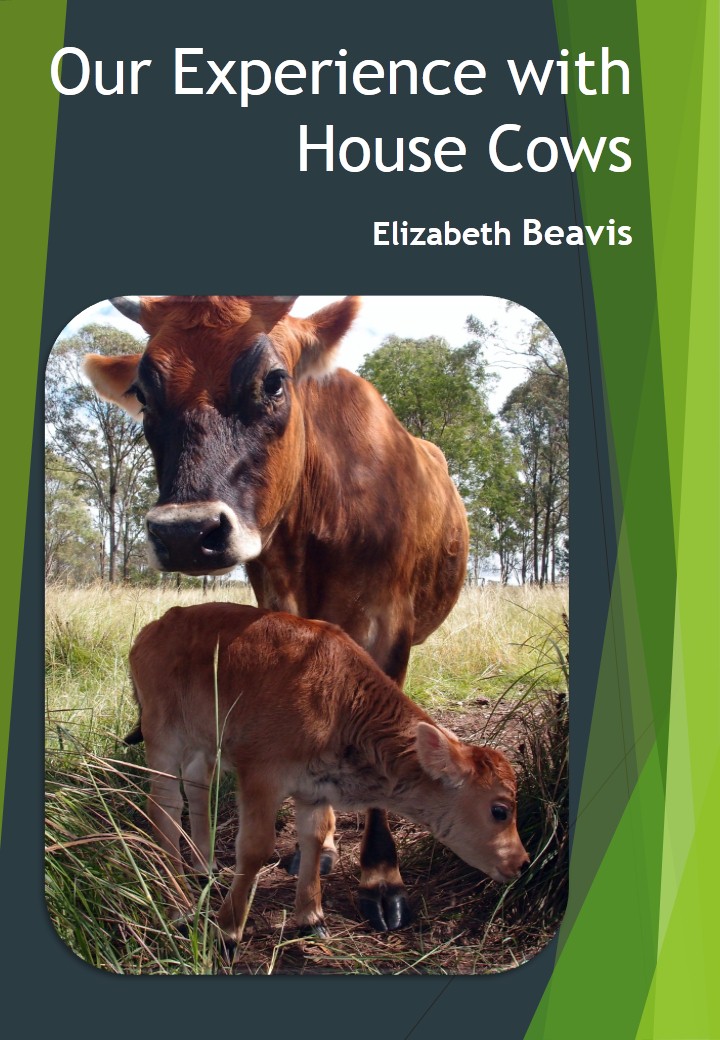Raw milk update
Following on from my post from the other day about raw milk, a friend who works in the food regulation area sent me some great links from NZ.
Firstly, NZ takes a risk management approach and allows farmers to sell up to 5L of milk directly to customers for their personal consumption. This is a very sensible approach that allows farmers and consumers to get what they want, raw milk direct to customers, without unnecessary regulation.
There was also a link to a study of the pathogens (disease causing microbes) that can be found in raw milk and how to minimise the risk of food poisoning. From reading this report, my understanding is that the risk can be controlled by the following actions:
Firstly, NZ takes a risk management approach and allows farmers to sell up to 5L of milk directly to customers for their personal consumption. This is a very sensible approach that allows farmers and consumers to get what they want, raw milk direct to customers, without unnecessary regulation.
There was also a link to a study of the pathogens (disease causing microbes) that can be found in raw milk and how to minimise the risk of food poisoning. From reading this report, my understanding is that the risk can be controlled by the following actions:
- Keep your cow healthy and free of mastitis - mastitis is most often caused by non-pathogenic bacteria, however there is a possibility of infection by human pathogens, which will cause tummy-bug/food poisoning symptoms. I'll write more later about natural methods to keep your cow healthy.
- Keep your milking area clean - many of the human pathogens that find their way into milk are found in feaces and/or soil, if the milking area is clean, there is lower risk of contaminating the milk during milking.
- Wash the cow's teats prior to milking - feaces or soil on the teats (due to lying down in dirty yards) can contaminate the milk. We wash Bella's teats with a face cloths in bucket of warm water.
- Discard the first few squirts of milk - the "foremilk" (the first few squirts) has the highest pathogen load as its closest to the outside environment, therefore the overall pathogen load of the milk can be reduced by squirting this milk onto the ground after washing the cow's teats.
- Handle milk with care (all milk, not just raw milk) - raw milk should be refrigerated immediately after milking and all milking containers and equipment should be kept clean. Milk is nutrient rich and the perfect medium for bacteria to grow. Even pasteurised milk can become contaminated after pasteurisation (particularly after the bottle is opened) and cause food poisoning if its not kept cold.
In my previous post I said that milk from healthy cows milked in sanitary conditions is safe. If you are going to buy raw milk, you will need to make sure that you're statisfied that the farmer is following the above guidelines, that the cows are healthy and that the milking conditions are clean, otherwise you do put yourself at risk of food poisoning.
Any thoughts on raw milk and the milking process?
You might also be interested in my series on getting started with homestead dairy
Any thoughts on raw milk and the milking process?
You might also be interested in my series on getting started with homestead dairy
Interview with myself
Interview with Mark and Kate from Purple Pear Permaculture
Interview with Kim from the Little Black Cow
Interview with Rose Petal
Interview with Marie from Go Milk the Cow
Interview with Ohio Farmgirl
Interview with Mark and Kate from Purple Pear Permaculture
Interview with Kim from the Little Black Cow
Interview with Rose Petal
Interview with Marie from Go Milk the Cow
Interview with Ohio Farmgirl
Buy my ebook "Our Experience with House Cows" on Etsy, Lulu and Amazon, or email on eight.acres.liz at gmail.com to arrange delivery. More information on my house cow ebook blog.
Reviews of "Our Experience with House Cows"
Gavin from Little Green Cheese (and The Greening of Gavin)




















Leave a comment